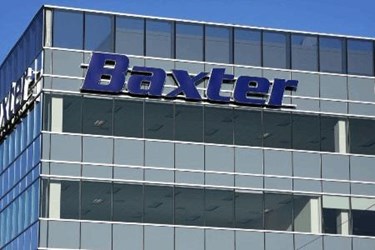Baxter Revenue Boosted By Hospital Products Business, Strategic M&A

Baxter achieved better-than-expected second quarter sales and significant growth in its hospital products business. CEO José Almeida reported that the company is on track with its strategy outlined earlier this year, with continued growth resulting from a “disciplined focus” on portfolio management, innovation, and capital allocation for M&A.
Baxter’s second quarter earnings this year totaled $2.6 billion, which represents a four percent increase over second quarter of 2015 and a three percent increase over Reuters projections. This figure represents double-digit growth in U.S. markets and a three percent boost in international sales on a continued currency basis.
Over half of the company’s revenue came from the $1.6 billion generated by Baxter’s portfolio of Hospital products, including the U.S. Fluid Systems franchise and increased domestic adoption of the Sigma Spectrum Infusion System. Baxter recently completed a study of its latest generation of Sigma Spectrum pumps, which include a new safety feature that achieved 97 percent drug library compliance within 30 days of implementation.
In October, then-CEO Bob Parkinson described his “three-pronged” strategy to accelerate growth in Baxter’s standalone device business following the spinoff of its pharmaceutical arm. Following Parkinson’s retirement in January, Almeida — formerly Covidien’s CEO — took the helm, announcing his plans to continue focusing on innovation, cost reduction, and small deals.
At an Investors Day in May, Baxter outlined a strategy that would generate 3 to 4 percent sales growth on an annual basis from 2016 and 2018, and generate approximately $1 billion of free-cash flow by 2018, and 1.75 billion by 2020. On a recent earnings call, Almeida remarked that these goals are “clearly gaining traction.”
During the second quarter, Baxter concluded divesting its remaining stake in its pharmaceutical spinoff; in June Baxtalta was purchased by Dublin-based Shire for $32 billion.
Almeida acknowledged that Baxter is considering several acquisition deals, but has dismissed a few in recent weeks due to their expense. Though he provided no specifics, Almeida commented that there are roughly 15 different opportunities in Baxter’s pipeline right now.
“There are a couple of deals on the table right now that we think are actionable,” said Almeida. “We are pursuing them but we’re going to always keep our eyes on value.”
Though the U.S. market remains a big priority market for Baxter, Almeida said that the company is looking to shift its focus overseas and to develop a global product line that will “create momentum outside the U.S.” Almeida specified that Baxter’s plan to draw $1 billion in revenue from China by 2021 includes the introduction of biosurgery products in that country.
Baxter recently completed a study of healthcare systems’ perceptions of remote monitoring and disease management, and has used that knowledge to further develop its remote acute renal therapy. According to Almeida, the company is three years away from introducing “on-demand manufacturing” of peritoneal dialysis solutions for home use.
